
Laura Plantation Tour in Louisiana
The Laura Plantation is one of the best plantations to visit for black history in Louisiana. Taking a tour of the Laura Plantation is something I highly recommend as it gives you a great introduction and overview of the area from the time it was owned by the French all the way to the Civil War and beyond.
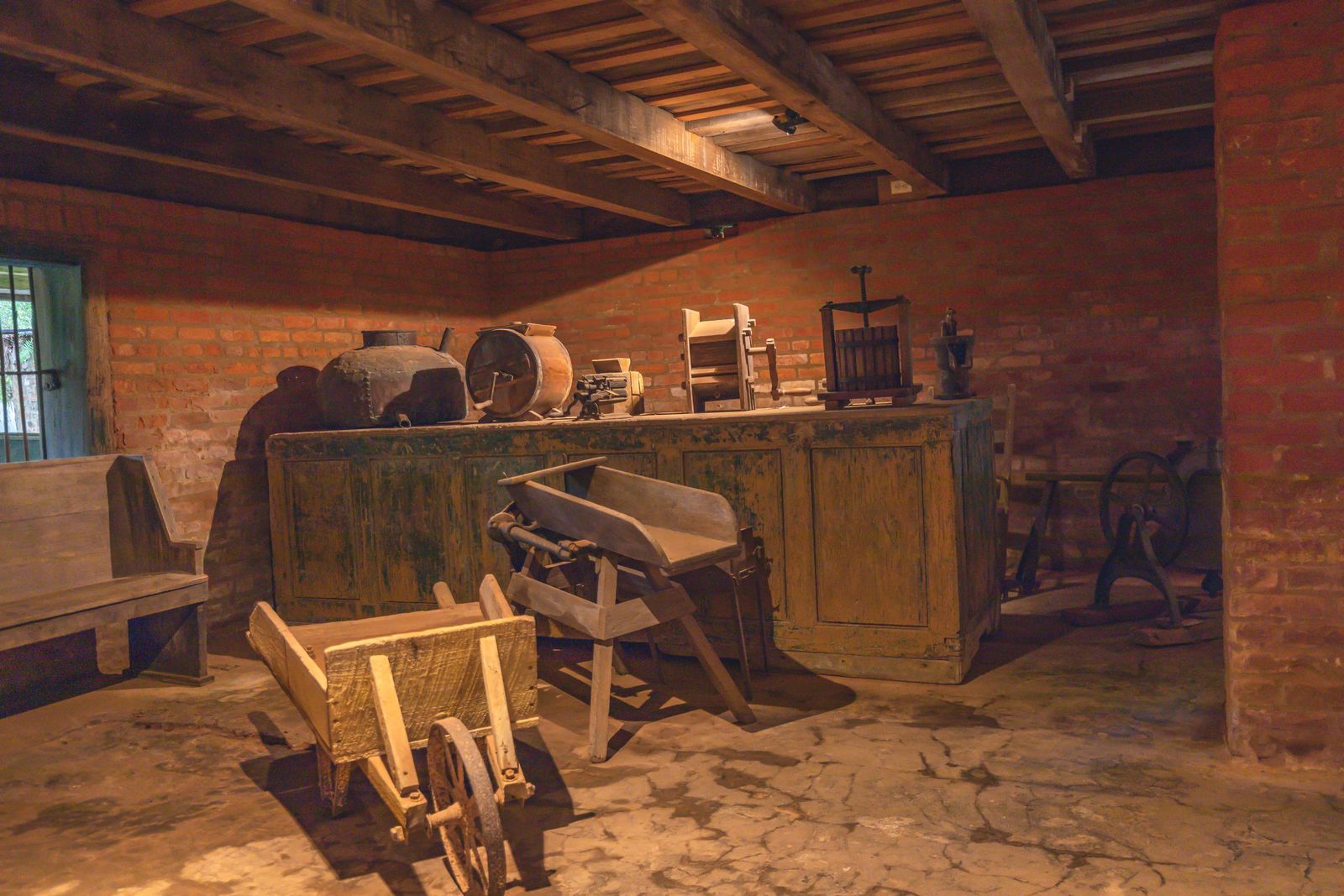
Quick Facts About The Laura Plantation
Location: Vacherie Louisiana, about a 35 minute drive from New Orleans.
Current Owner: Norman Marmillion
Transportation: I recommend getting a rental car to really tour the Louisiana River Parishes, or you can take a Grayline bus to the area.
Type of Plantation: Sugar Plantation, but no longer a working plantation.
National Register Structures: There are 12 buildings on the National Register including the Overseers’ Cottages, Carriage Houses, Barns, and a water well.
Photography/Videography: Photography and video are allowed on the outside of the property, unless special permission is obtained.

Accessibility: The basement of the main house of Laura Plantation is accessible, but there are 15 steps up to the main floor of the house. There are also three steps up to the slave cabins. Please contact the property prior to arrival so they have enough staff to lift your wheelchair up the steps in order to access the tour. Many of the paths on the grounds are either gravel or brick.
Bathrooms: There are bathrooms available in the gift shop and they also have wheelchair accessible bathrooms.
Food and Drink: They do have beverages available in the gift shop as well as some snacks.
Tours: Guided tours only start daily at 10am and are available in English and French. Grayline also does tours to Laura and then Oak Alley OR Whitney.
Books on Laura Plantation: Memories of the Old Plantation Home by Laura Locoul Gore this is a memoir by one of the plantation big house owners from the Locoul family. It gives a fantastic overview of what life was like in the French Louisiana, how things changed during the Civil war and after, and what the culture was like in this area specifically.
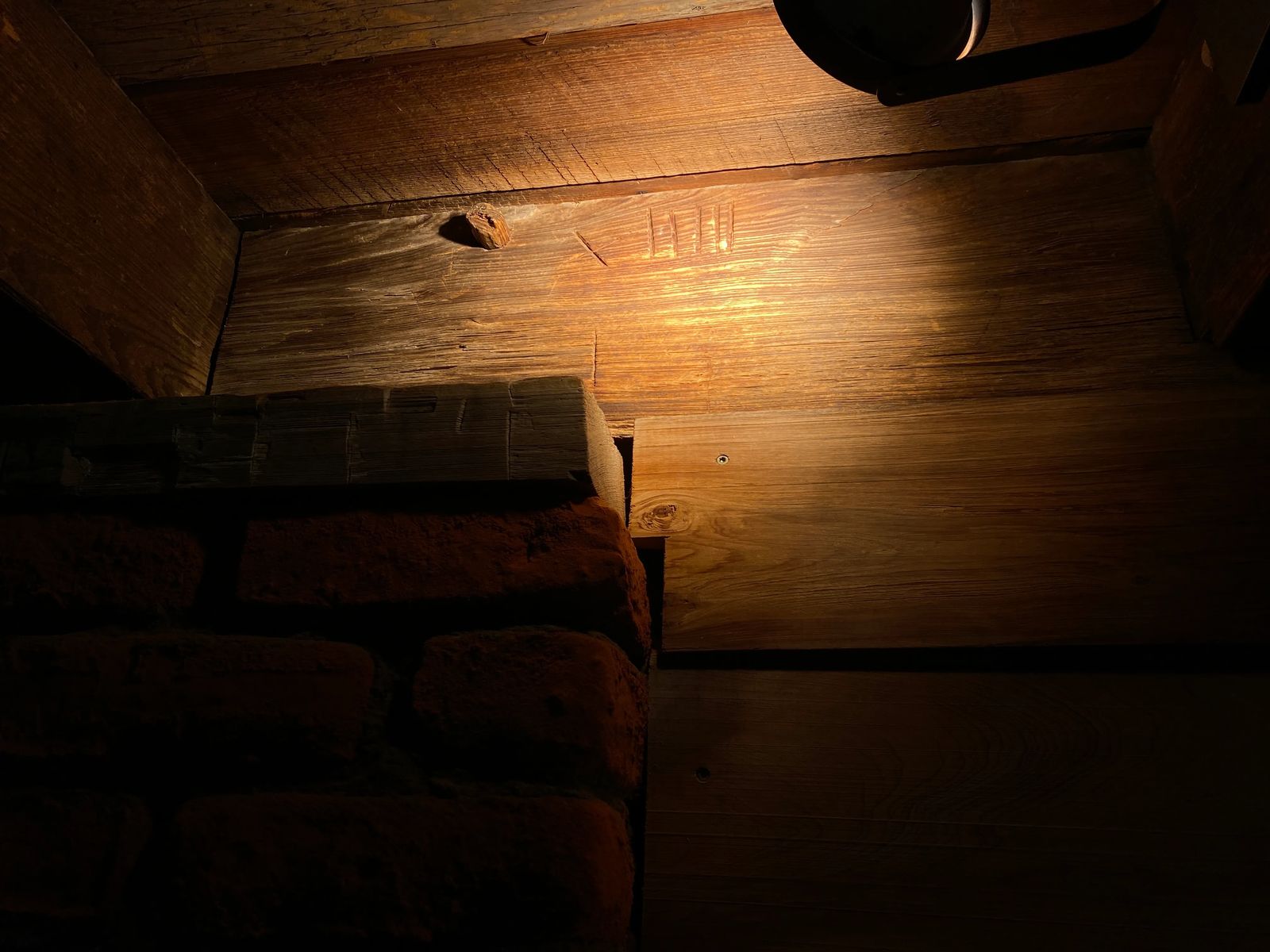
Building Plantation Homes
The site was built on high cleared ground right near the Mississippi River, really on prime real estate, but also unfortunately in the middle of the Colapissa Indian village that had been here for over a century.
Plantation homes were largely built by skilled slaves from Africa, who despite knowing how to build a fancy plantation home were still required to live in shanty shacks. Laura is unique in that you can see the ‘signature’ of the slaves who helped build this colorful Creole home.
The tour starts in the basement of the home, where you see the supporting beams of the home with a few Roman Numerals. These indicated the type of plans they used to build the home. It is surreal to see Roman numerals carved by the hand of a slave.
When you see physical evidence of slavery like this (and many others) it makes things tangible, real, easier to let the imagination explore and immerse the mind into the realities of what it may have been like to live during that time period.

As in the time of the Romans, slaves were considered sub-human and were often described in terms of the masters that owned them. They were also often illiterate and would sign their names with a mark, often looking like an X. This will become important to remember later when slavery was abolished and the transition of being a slave to a free person of color ensued.
There are two big houses (plantation homes) on the property. The first home you see will be the colorful plantation home of the Duparc and Locoul family. When driving down the plantation roads you could easily tell which type of family lived in which houses because of the coloring of the homes (more of a Creole/French style) and the type of architecture used.

Laura Plantation in the early 1800’s
It was 1804, and the Frenchman Guillaume Duparc funded the building of this home to start a sugar plantation. The original home was a U-shape with two back wings, but a terrible electrical fire in 2004 destroyed 80% of the home. While it was restored and repaired, the two back wings of the home were never rebuilt and now have plain planks covering the back to show where the fire had been.
It took 11 months to build the Laura Plantation, with much of the lumbar being sourced locally from Cypress trees as it is resistant to wood rot. The original house was 24,000 sq feet and had a 2,500 sq ft kitchen attached at the rear (where the fire started).
The house is raised on bricks that, if you do architectural investigations, are built on a type of pyramid system 8 feet underneath the ground to help stabilize the home, especially during flooding. Remember that modern day levees were not built in the 1800’s to the extent they are today and the Mississippi was far closer to the homes than it was today.
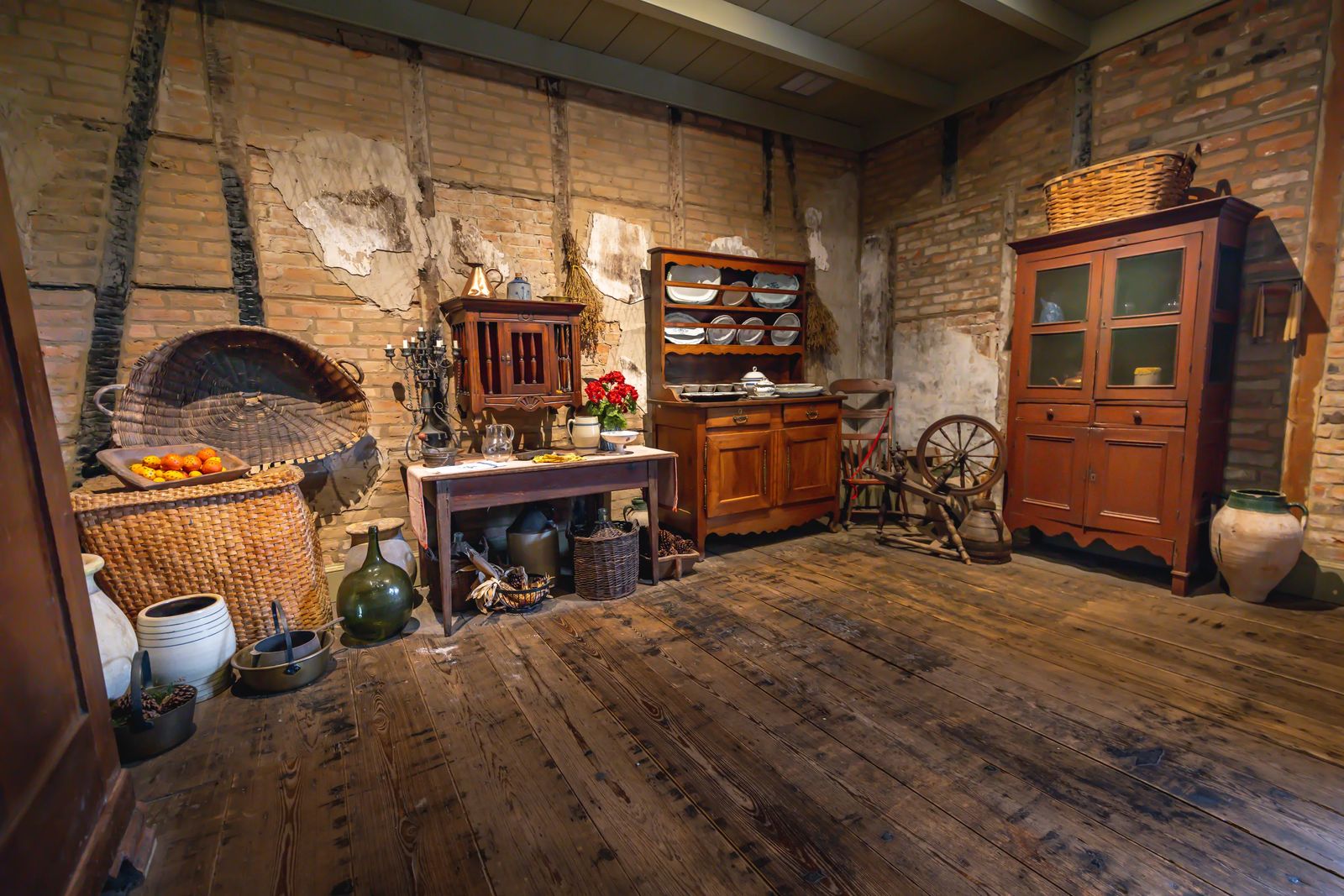
So why build so close to the Mississippi then? Plantations relied on irrigation to water the sugar cane which required A LOT of watering (1-2 inches each week), so when the Mississippi would frequently flood with the rains, it allowed irrigation with less manual labor to make it happen.
Sugar cane requires a long growing season and would often require rotating fields with carefully planned maturation times in order to produce enough sugar to keep a plantation growing. It also requires just the right amount of humidity, heat, and water in order to create the sap that sugar is derived from.
It is a difficult plant to grow, but sugar was in high demand for the confections and sweet treats often found at stately homes tables during entertaining. Sugar cane, after it is harvested also requires long hours boiling it in large metal basins with constant watch to ensure it doesn’t boil off too much water and burn the sugar. This is why the sugar plantations were known for the back breaking work, there were no breaks, no ‘off season’.....the work was never done on a plantation here.

The French Naval Officer and Gender Roles Reversed
Guillaume Duprac was a naval officer who aided in the American Revolutionary War that ended in 1783, and shortly after acquiring the land he died in 1808. To sum up his character in one story - he was part of a duel with his father’s best friend's son, and ended up killing him. His father was so angry he fired a gun at his son, missed, and killed his favorite cow. This didn’t help the situation at all….sooooo he is then sent into the Royal Navy (seems like parental punishment hasn’t changed much for unruly children).
He goes off in the Navy, rises in rank, and eventually is posted in Louisiana where he married Nanette and obtains his plantation land. Now back to this historical tour of this family…..the house is built and Guillaume is dead leaving the plantation to be run by his wife.
His wife Nanette Prud’homme (pictured above) took over the running of the plantation, which if you take a minute to think about this - a woman was running a large plantation in the 1800’s is a bit shocking. Could this situation be any more chaotic??? Yes, yes indeed it can, but French intrigue, gossip, and scandalous tales are always the best. In fact, Nanette Dad had been the court physician to Louis XV!
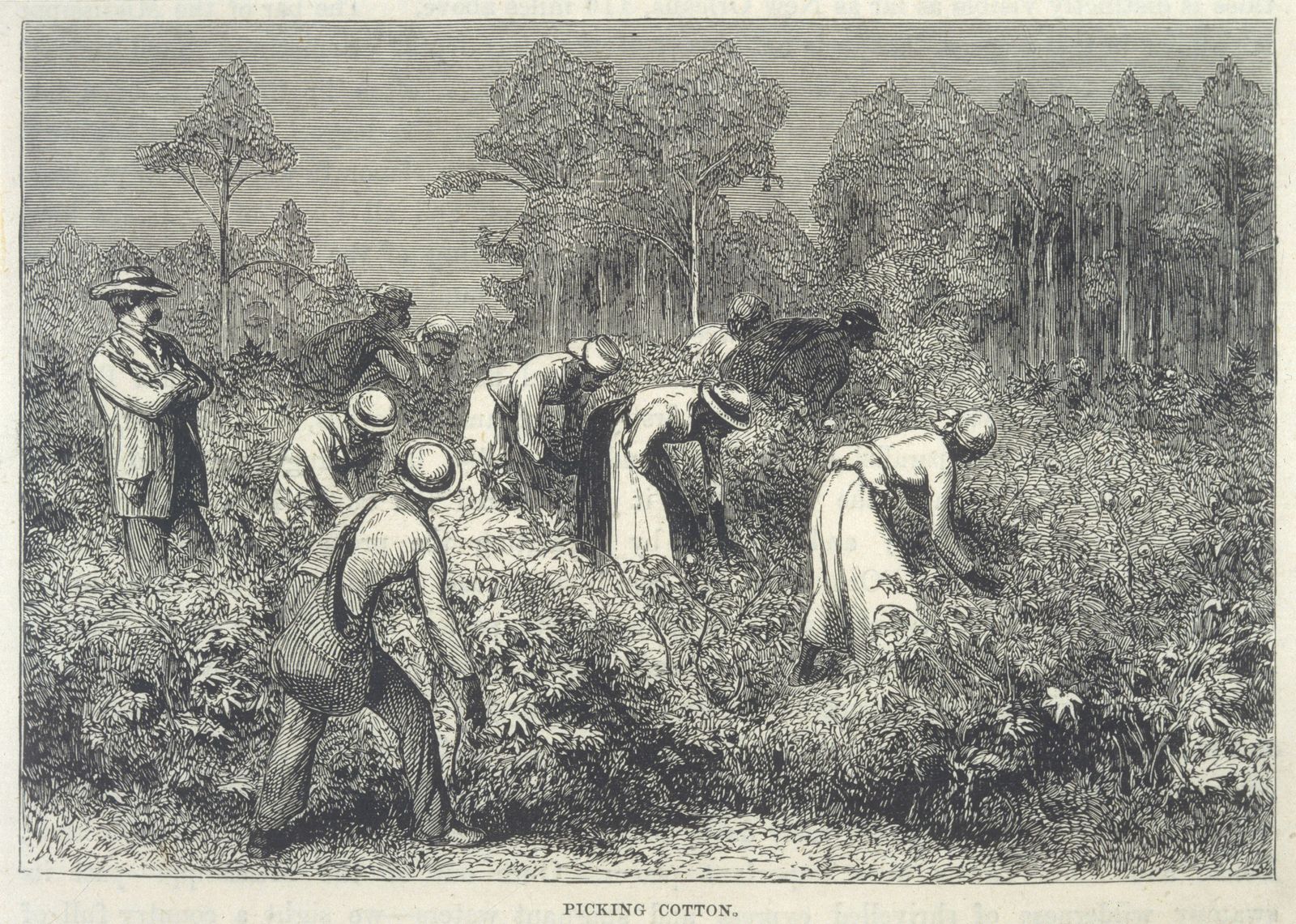
Gender roles during the 1800’s were quite clear cut, and women running a large business and plantation was unusual to say the least. Typically women during this time period were in charge of food, children, and constantly entertaining guests to help network and get the upper hand in political schemes that seemed to never end.
The sugar plantation started off with 12,000 acres (about ½ the size of Disney World), seven slaves with six being from west-Africa and 1 Amerindian slave. It was originally called the I’habitation Duparc, then renamed later as the Laura Plantation.
When the Civil War started there were 185 slaves who were working at this farm. There were 69 slave cabins, a communal kitchen, slave infirmary and several water wells along the roads. A mile behind the home was a sugarmill. There are several slave descendents who still live near this plantation today.
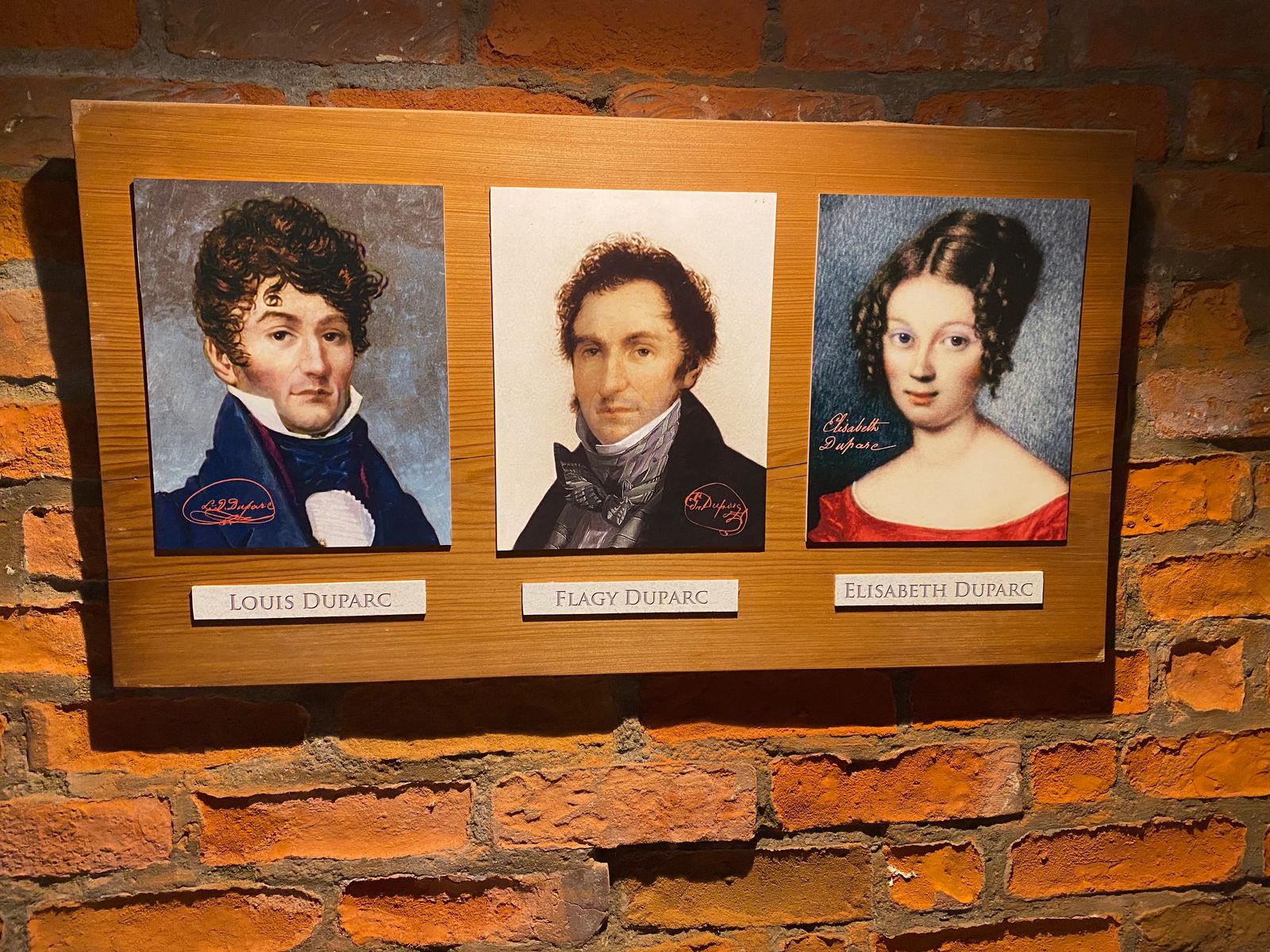
Transfer of Power
After successfully running the plantation for several decades, Nanette gave control to her three children Louis, Flagy and her daughter Elizabeth. Elizabeth will become important later in this story as she is the Grandmother of Laura Locoul. Elizabeth Marries Raymond Locoul as she is now the heir of the Duprac plantation and very wealthy.
Nanette was of such a mind and fighting spirit she lived to the age of 94, the average life expectancy at that time was 37….. Up until her death in 1862 she would walk the halls of the Laura Plantation with her rosary beads singing the National Anthem.
So, Nanette exits stage left, and Louis goes to France for a time and has such a violent temper they name him “the fire eater”. Nanette becomes afraid for Louis because of the tumultuous time of Napoleon and threatens to cut Louis off if he doesn’t return to the plantation immediately, so he returns.

He marries a German girl that was educated in Paris with a lovely personality named Fannie Rucker. Pleased, Nanette makes him the business agent for the plantation. They have a daughter, Eliza. Elizabeth (Nanette's daughter) is still in control of the Plantation at this point - so I’m sure the family dynamics were…..entertaining….especially with Louis’ short temper.
Back to Louis and Fannie’s daughter, Eliza, who just turned 16 years old and must be married to a good match. The stress of trying to be perfect for her parents and for a potential match causes her to break out in acne, a less than perfect attribute in her parents eyes.
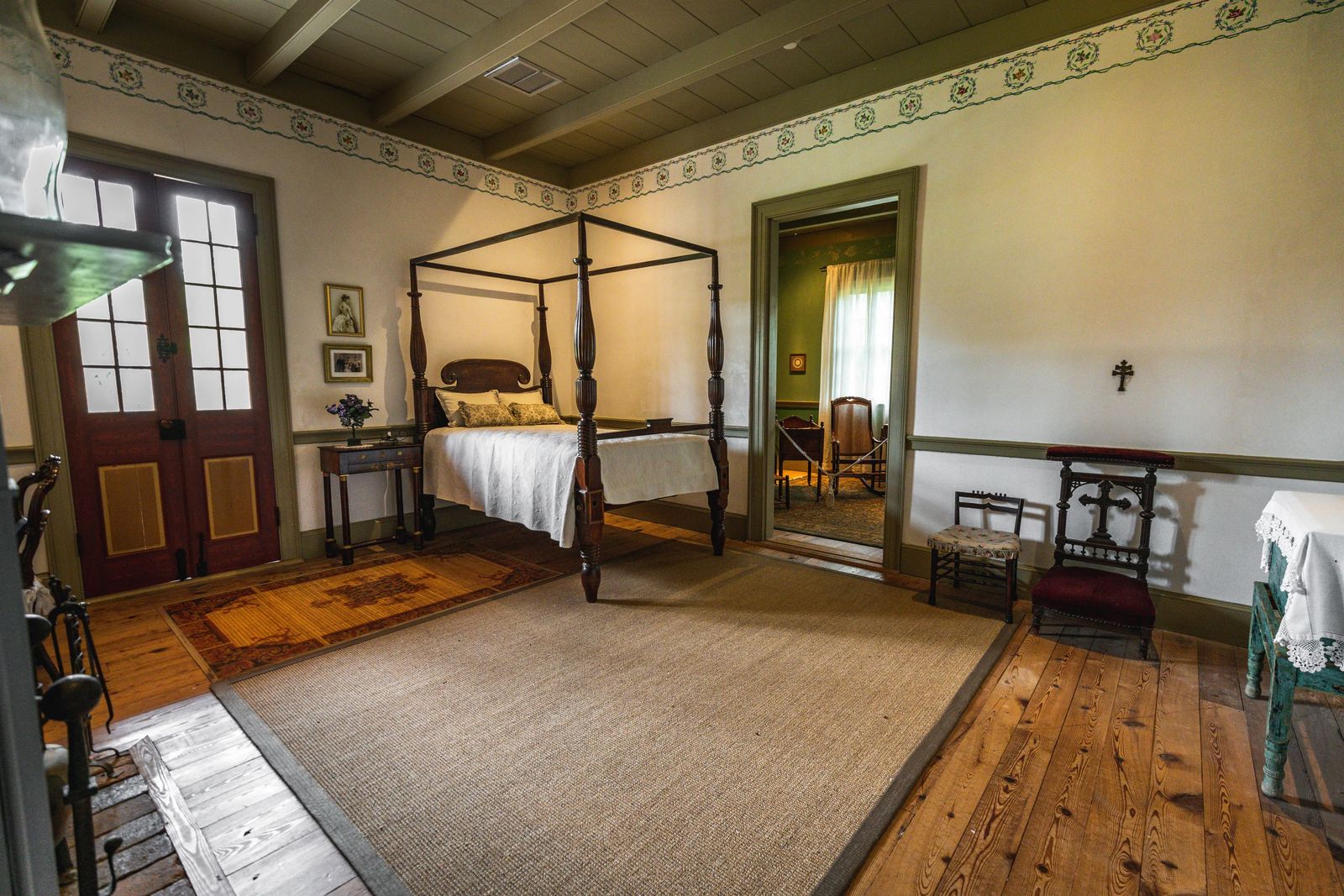
Her parents become obsessed with finding a cure for the acne. So they hide her away and attempt to cure her acne with every imaginable cure they know of. They hear of a doctor in France who is using arsenic as a way to cure acne. So they take Eliza to France, and the doctor miscalculates the dosing and kills Eliza that same day.
Fannie locks herself away in grief over losing her only daughter. Louis' temper returns because of her melancholy and they physically separate. Fannie has her grief and anxiety as her company, while Louis moves to New Orleans with two teenage slaves as concubines. (The more I learn about Louis and Fannie the more I really dislike them both….)

The Beginning of Chaos
Flagy isn’t the eldest, and let’s be honest, was probably not the favorite. So he whined to his mother about the unfairness of life, and asked to be able to run the plantation. Well as with most second born children, like myself, we overcompensate for the older sibling and Flagy ends up making a FORTUNE for the family from the plantation. (Yeah for second born children!)
Flagy did marry, but never had any children soooooo now we have Elizabeth running the plantation by herself.
At this point Elisabeth (top picture above) is trying to keep the plantation running smoothly without going into debt. She marries George Raymond Locoul before her brothers die, and was known as the pacemaker of the family. They have two children together Emile (bottom right) and Amiee (bottom left). Emile is a slight boy, who knows how it feels to be picked on for physical differences - and he starts to sympathize with the slaves at the age of 13.
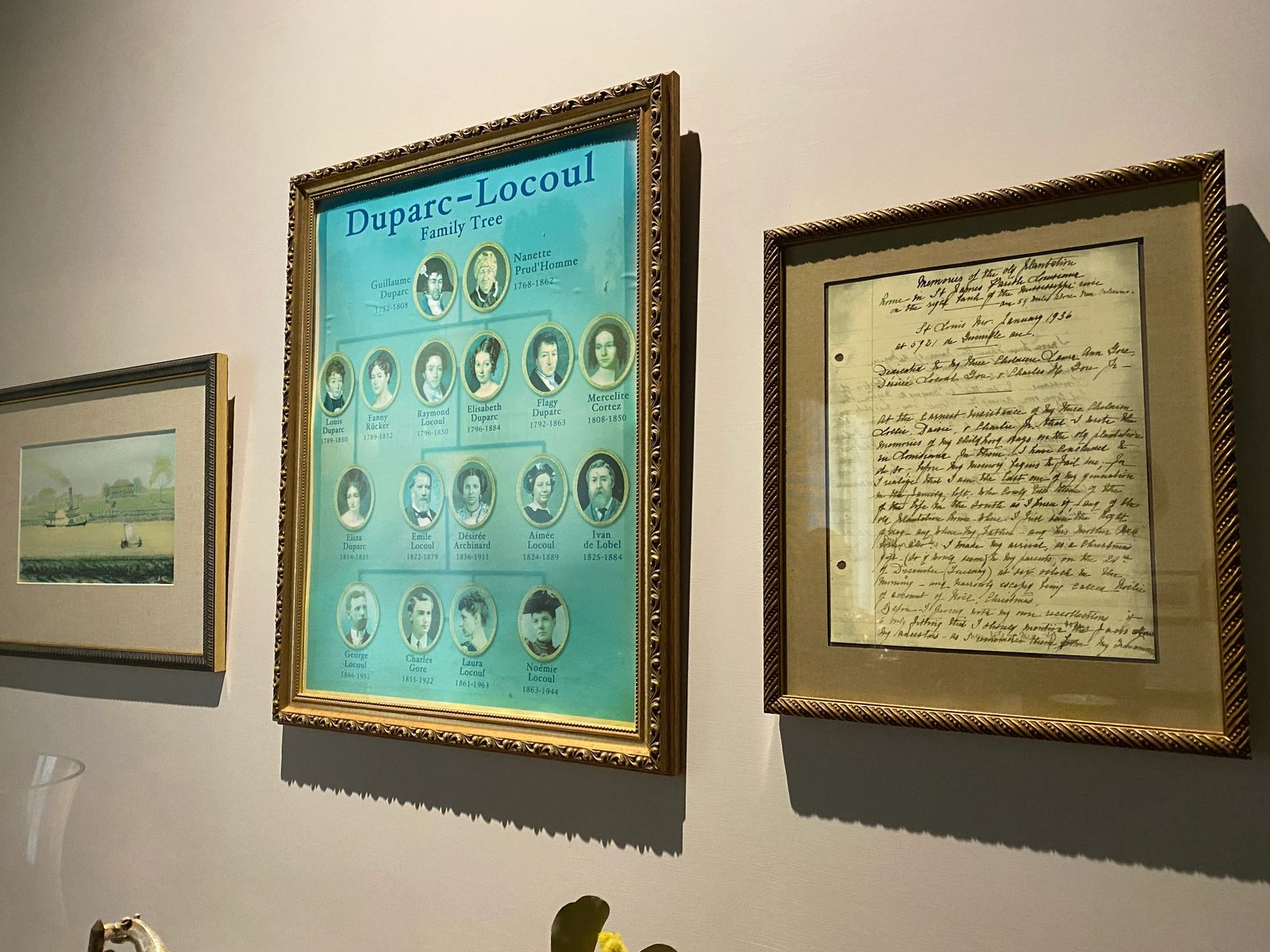
Elizabeth sends him quickly to France to ‘correct his ways’ of viewing slaves as humans and not as sub-human species or animals, but the stirrings of the French Revolution were happening in France. Sending Emile to France only spurred his resolve to resist the oppression of humans. He dives into law, befriends Victor Hugo and dedicates his life to viva la resistance.
Being a man of the law was not considered a prestigious career at the time though. If you were from French Louisiana a plantar/famer was the most prestigious career for a man…..oooooooh how times have changed from then til now. Just remember this society still holds many of the French ideals, language and cultural thought.
Elisabeth’s husband dies as well as her two older brothers…..I can imagine her saying something to the effect of “shit…..well…..now who do I give the plantation to that won’t destroy it”.
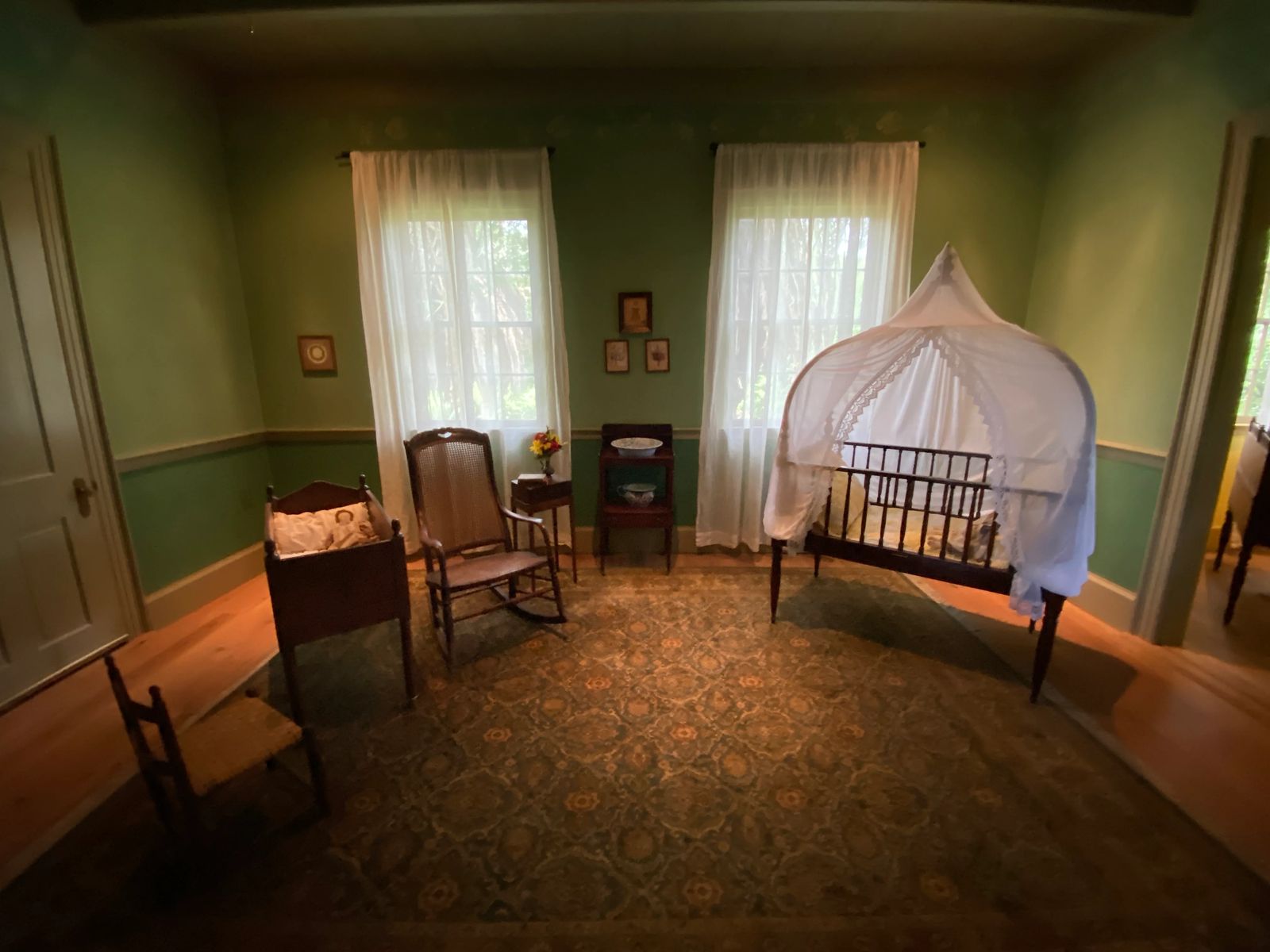
This is after seeing the plantation through the Civil War and all the changes to how society and their personal home was run --- so who does she leave it to? She divides the property between her two children Emile (the rebel and resistance leader) and daughter Aimee.
Aimee marries Ivan, and Elizabeth favors them - however Emile, his wife and three children have returned to the plantation, upsetting the balance of power. Elizabeth now has to split the plantation between the two children, but there is only one sugar mill.
Emile doesn’t get the sugar mill, but Ivan reluctantly agrees to let him use the sugar mill he is deeded until he is able to build his own. The slave that built the original sugar mill returned to the plantation, along with many others because there really was nowhere else to go.

There is constant tension on the plantation between Emile and Ivan until finally Ivan says that Emile can no longer use the sugar mill for his ready to harvest sugar cane. If this wasn’t enough of a blow, the slave that was given the money to build Emile his sugar mill took off with the money entrusted to him, along with many of the tools to build it.
Emile is frantic at this point, he is able to find nearby plantation that is willing to allow him to use their sugar mill. In order to get his crop there though, the slaves that are remaining on the plantation must load it into a train car, and physically push the car several miles down the tracks.
Emile was trusted by the remaining slaves that had returned, he had protected them before the Civil War - fighting to keep their families together. He pays them for their work, at his own expense at times, but they stay and help save him from ruin.
Emile and his wife continue to care for the plantation and all those on it until in 1879 at the ripe age of 57, Emile dies.
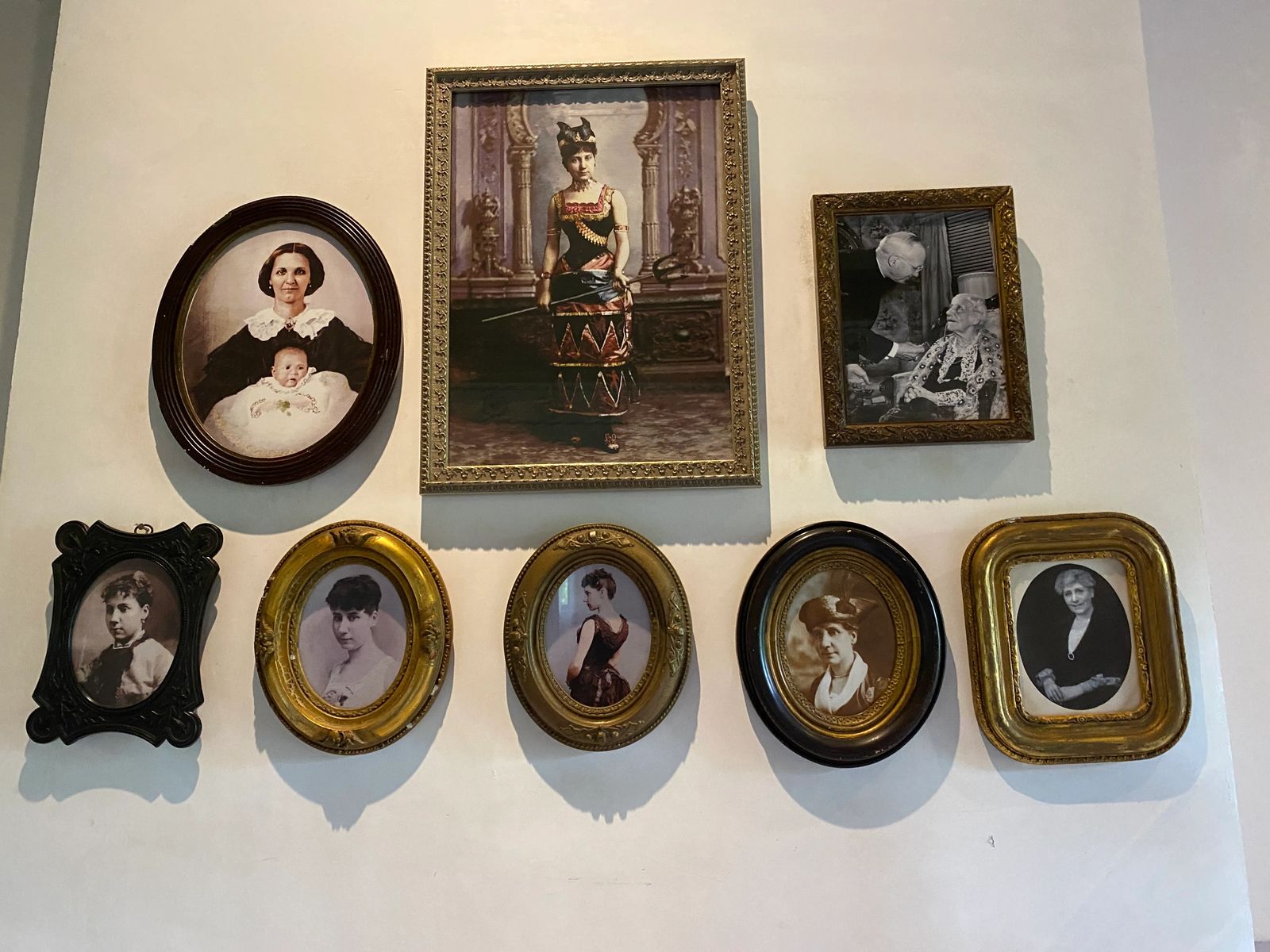
Top Left to bottom right: Desiree and Laura, Laura at Mardi Gra, Laura at 100th birthday, various photos of Laura as she grew into an adult.
Laura Locoul Gore
After having a chance encounter with Pa Phillips as a child she saw the dark side of running a plantation. As a child she would watch small calves get branded, and was deeply disturbed by the pain they appeared to endure.
Her grandmother was running the farm at the time, and as Laura was playing near the well on the farm she ran into a kind slave Pa Phillips.
He took his hat off in respect and she noticed a mark on his forehead, asking if he was ok, he said he was. She inquired after the mark and he explained that her grandmother branded him for running away (well attempting to run away several times). Horrified, she realized her Grandmother was not who she once thought she was.
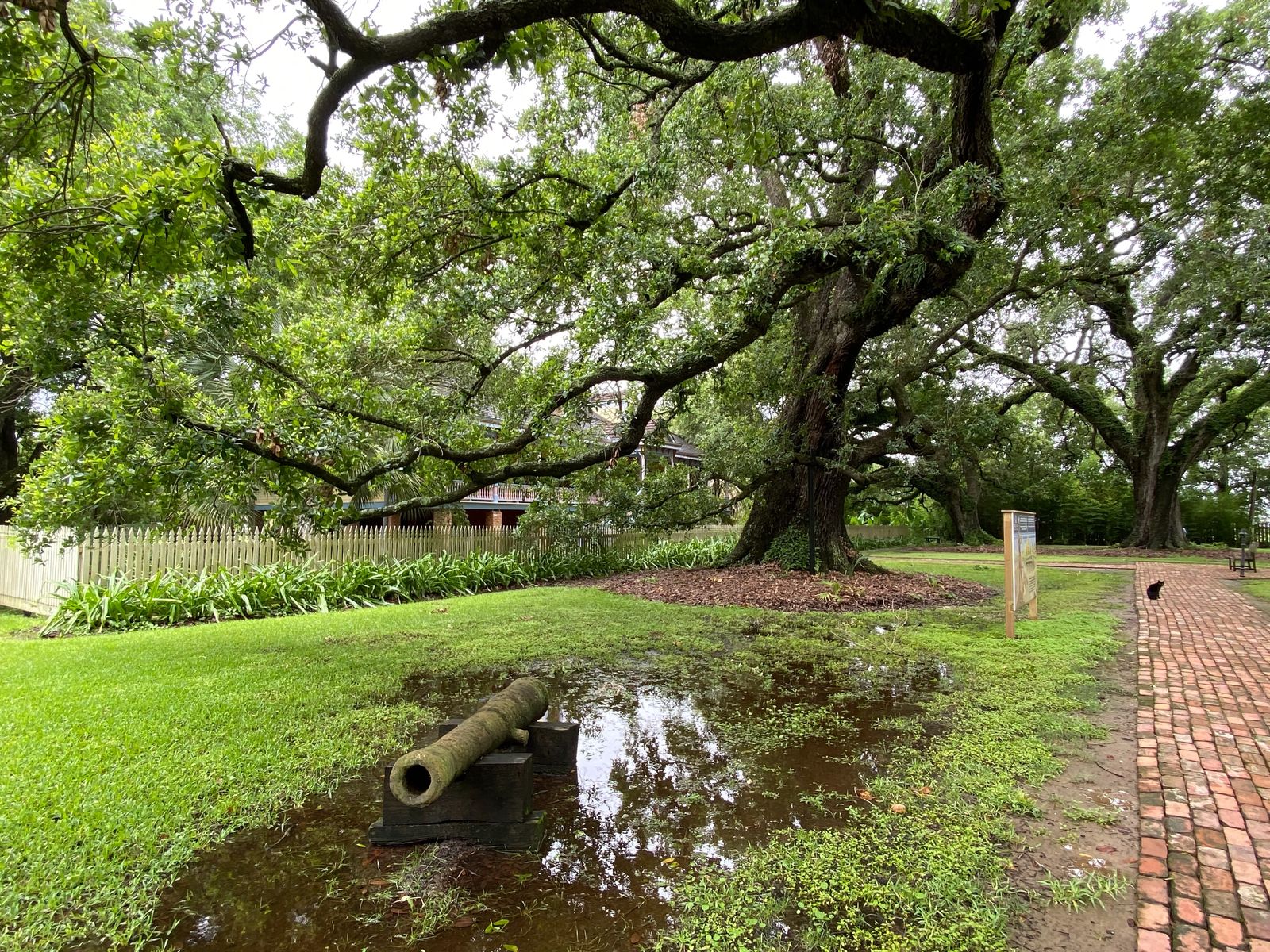
When the Civil War came, the family fled north to a safe haven - not knowing if she would ever return to the plantation. Several slaves accompanied the family as they had nowhere else to go as they spoke only French/Creole and their native tongues of Africa.
This likely showed Laura that there was a way to live comfortably without having to run a plantation. However, after the Civil War, their family did return to the plantation as I mentioned above and she, again, was exposed to a sort of family Civil War between Emile and Ivan.
She grew up on the plantation watching the way her father interacted with the newly freed slaves, the way her mother would care for the slaves in the quarters like they were her own.
The older she grew the more wild and free spirited she became, begging her father to attend a boarding school in New Orleans. This is where she made so many friends, continued in her studies, pulled many pranks until her debut in society in a satin white dress.
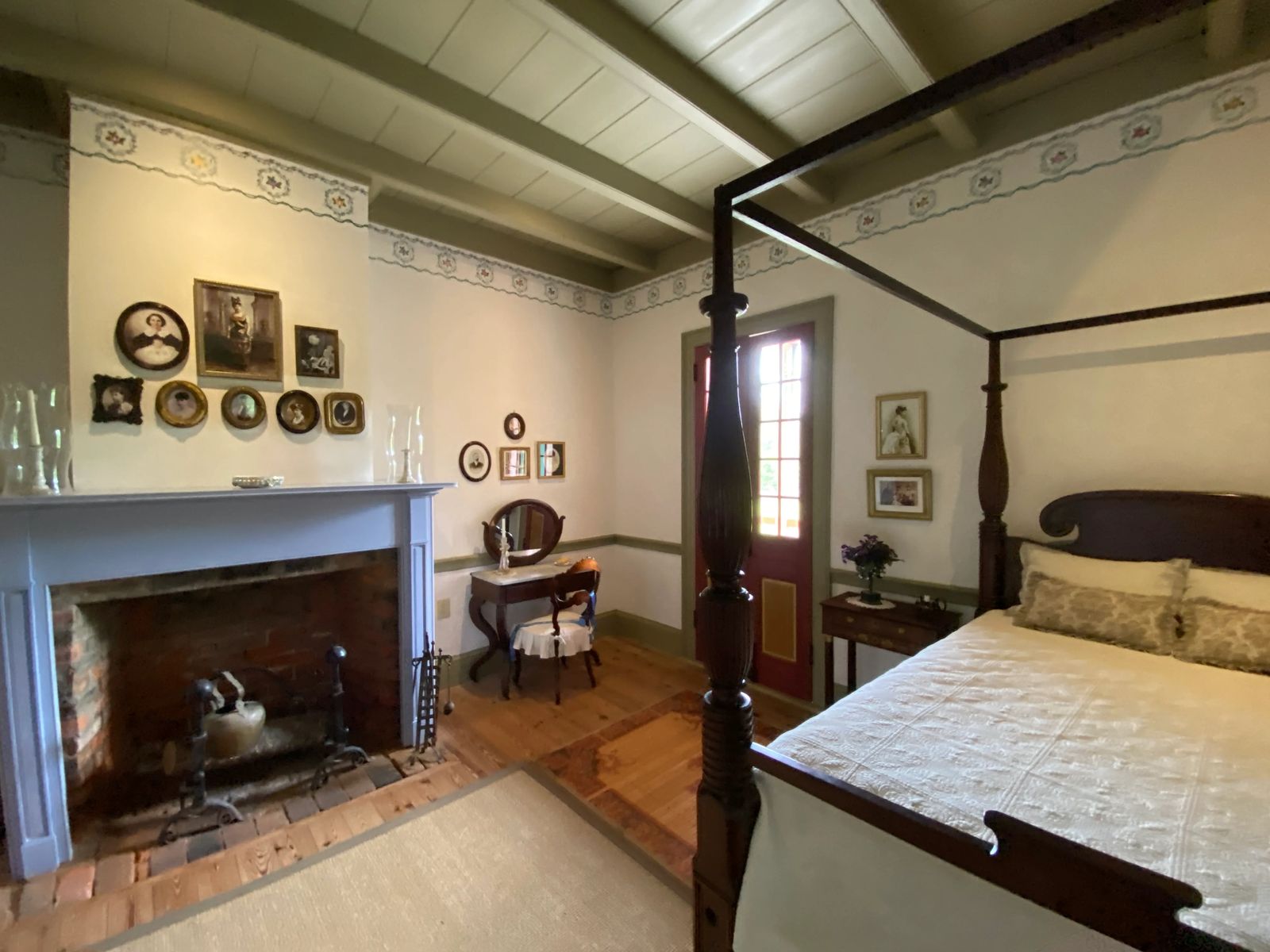
Much of Lauras life was spent in New Orleans, her dear brother George ran the plantation after her Father died at a very young age. He tried to continue to run it as her father did, but after Emile had to take out a mortgage on the home, George had to sell much of the land in front of the home to pay off debt.
While the overseers did help George with the plantation, it continued to fall into debt slowly. Laura continued her time bouncing around from ball to ball, hoping to find a good match - until at a friend's wedding, she stood next to Charles Gore.
Charles had just returned home from South Dakota, after failing to run a cattle farm with much of his inheritance. They kept their engagement a secret for six years after Laura returned to the plantation, turning down suitor after suitor. Finally their engagement was announced, they were wed, and she returned to Charles' hometown of St Louis.
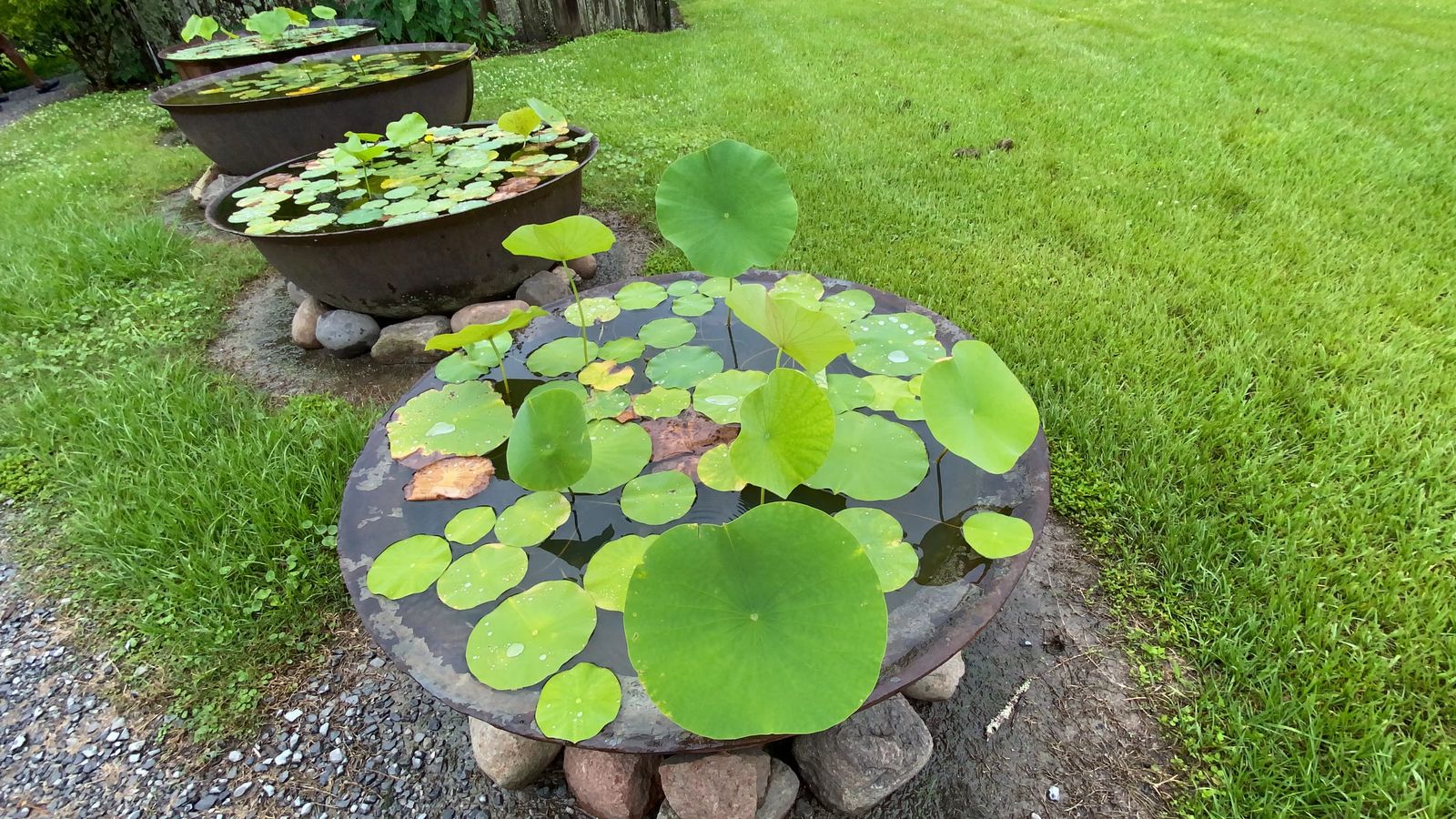
Selling A Legacy
After Laura's Grandmother and mother died, the plantation continued to fall into more and more debt as the price of sugar plummeted. So the decision was made to sell the plantation as George was alone, and unwed.
The plantation was sold to the Waguespack family, with the stipulation that the name of the plantation remain “Laura Plantation”. The Waguespack family continued to run the plantation until 1984, after which it was abandoned.
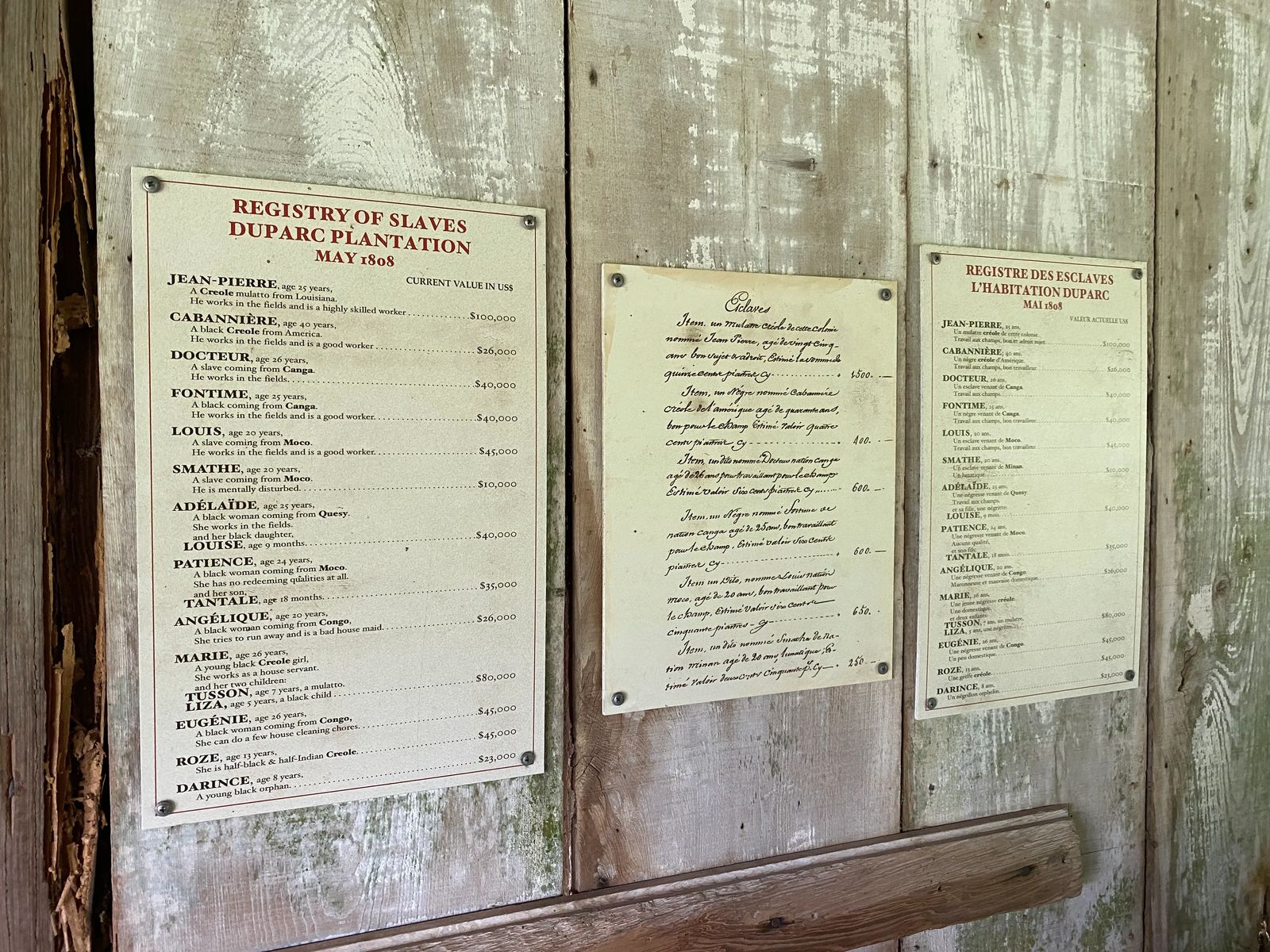
Laura did return to the plantation with her daughters, who had read Gone with the Wind and asked Laura if that is how life on the plantation really was. Laura realized that if she did not write down both the good and the bad of the plantation that the real experience would be lost to fantastical interpretations of book writers and Hollywood.
This is where we get many of the details and history of the Laura Plantation from the memoir of Laura Locoul Gore, Memories of the Old Plantation Home: A Creole Family Album. I highly suggest getting this book and reading it prior to visiting the Laura Plantation.
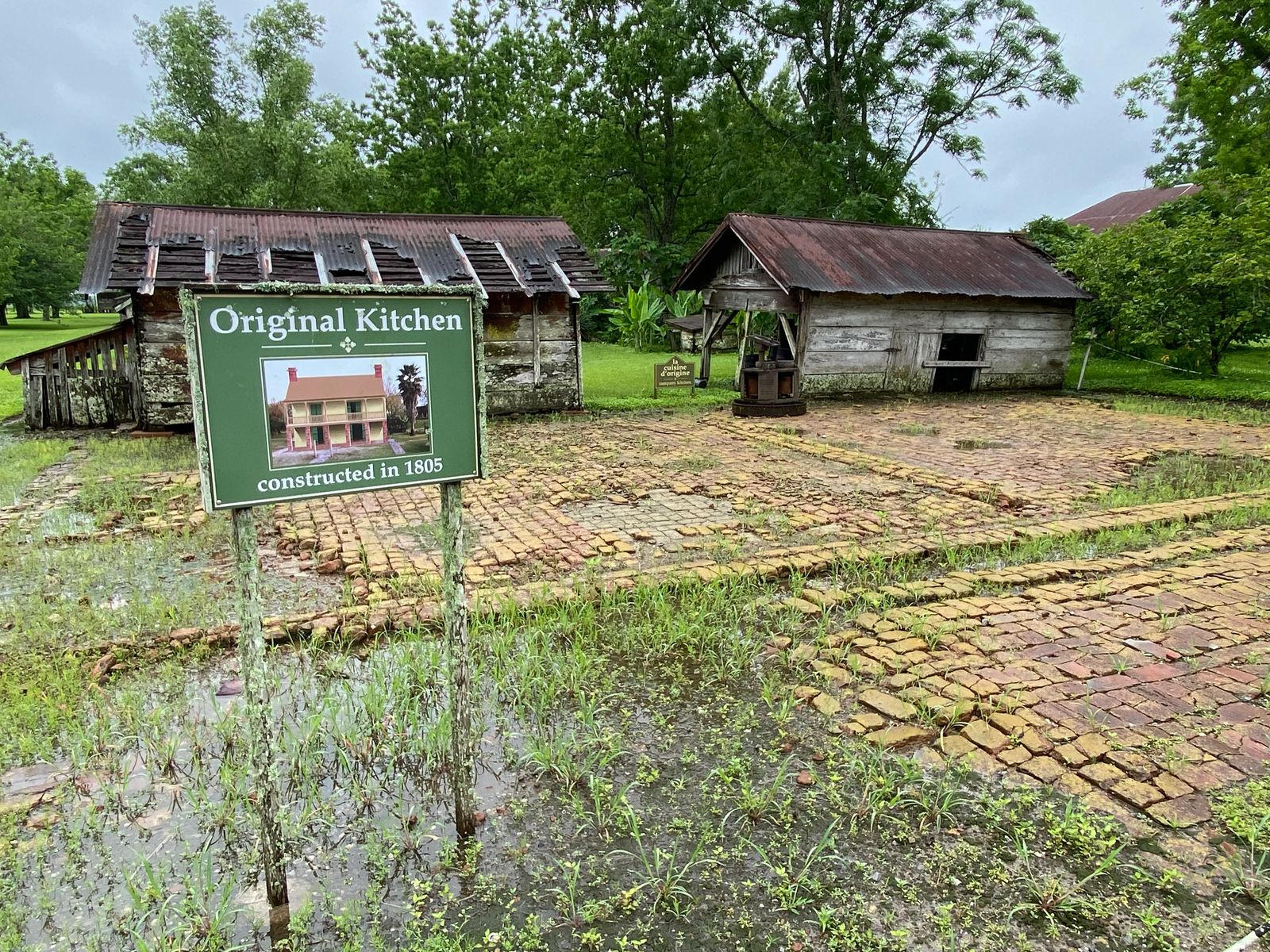
Near Loss
After the plantation was abandoned in 1984, it was owned by the governor of Louisiana at the time. He was hoping he would be able to sell it back to the state for a large sum of money so the bridge that was to be built across the Mississippi could be built.
The bridge wasn’t built here because of a fault line found running right underneath the home, so it was eventually abandoned. The home and properties fell into disrepair and was threatened to be demolished until it was purchased by the Laura Plantation Company, a private enterprise with the sole purpose of restoring the property.
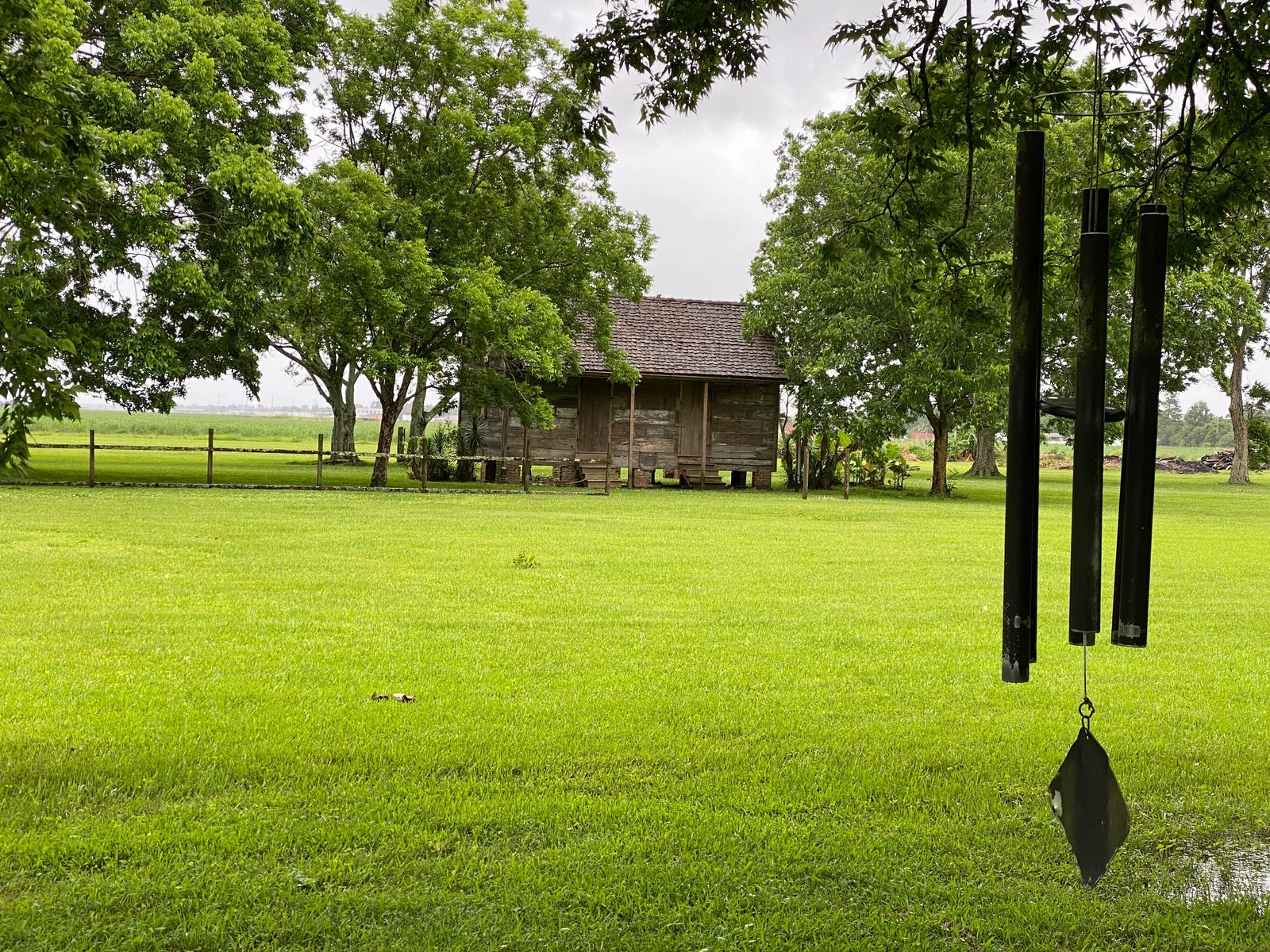
Modern History and Creole Conservation
Norman and Sand Marmillion are the current owners of the Laura Plantation and owe much of the restoration, passion, and revitalization of Laura to them. They have dedicated the last 20+ years to saving this property not just for plantation history and black history, but also for the Creole history of the area that is often overlooked and not acknowledged.
In fact in 2017 a new exhibit was opened at Laura highlighting the Brown family. The Brown’s were native to Vacherie (now the Louisiana River Parishes), and lived there for five generations.
Because of the strong Catholic presence in the area, the areas along the Mississippi are not called cities, but parishes still - referring to the Catholic parishes that took care of and provided for needy citizens within its parish borders.
The parish clerks are also largely responsible for helping document so many black lives, family histories, marriages, and baptisms helping reunite black families with cousins and siblings they may have never known.

It wasn’t just the church associated with life milestones that were recorded though. They also kept records of slave trades, donations and familial successions. This is a gold mine for genealogists, historians and for many locals to preserve and investigate the history of their ancestors. There is still so much work to be done, but being able to see the work, hear of the efforts being made to reunite, repair and heal was very moving.
The most moving story was when Joseph told our tour group about how the Laura Plantation provided a family or slave descendent gathering for all those descendents of those who grew up, were family or had been associated with the Laura Plantation. There were discoveries, reunions, and stories that were relayed to the Laura Plantation for preservation. In Joseph’s words, “it was a really special day for them, and the staff here at Laura”.
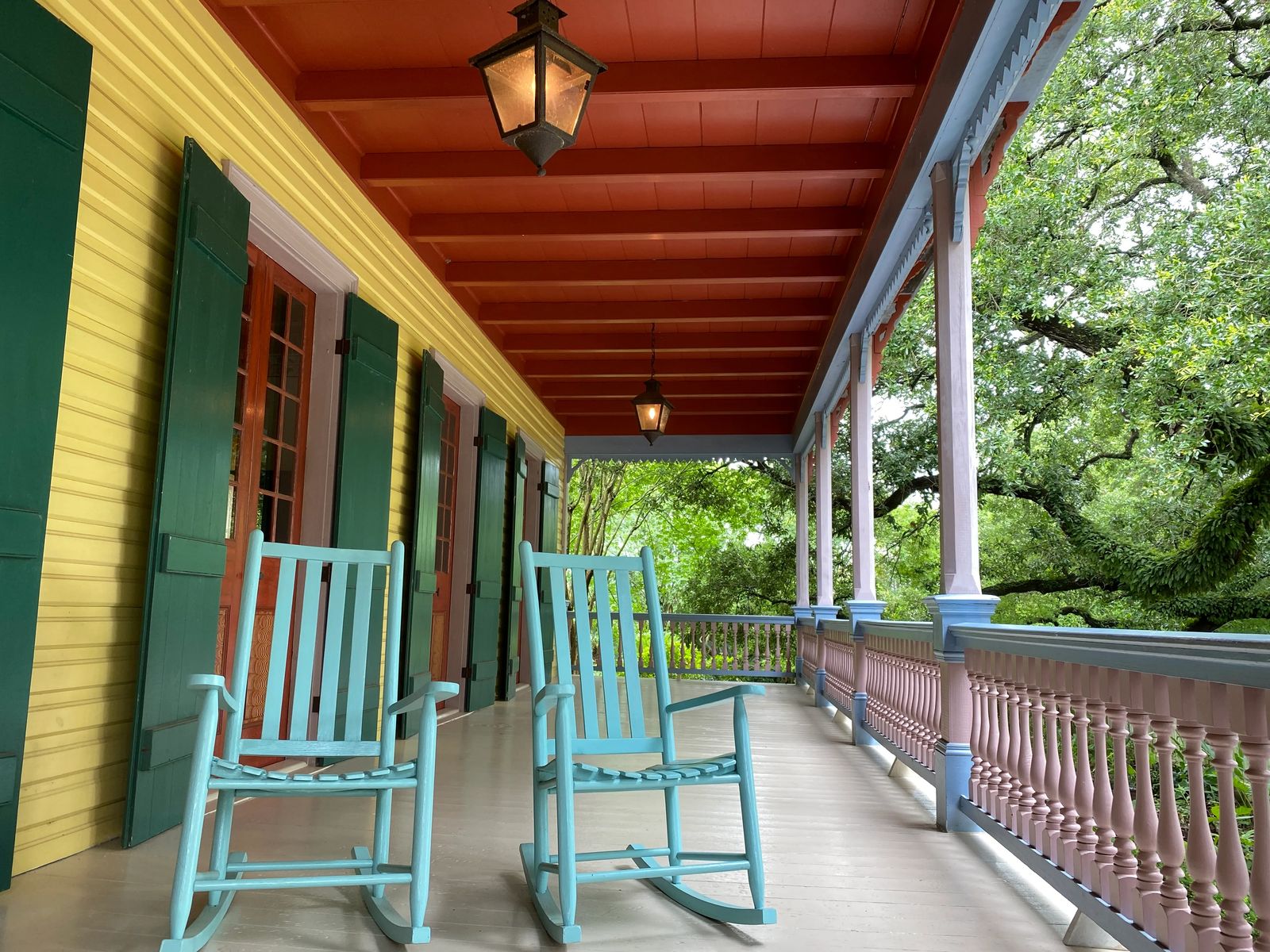
The Inspiration for Briar Rabbit
Did you know that the inspiration of the beloved children's story of Briar Rabbit came from west African folk tales? The story of Br’er Rabbit or Compair Lapin was carried from the SeneGambia area of West Africa across the Atlantic to the plantations of the south. The stories and folk tales survived through slavery at the Laura Plantation until eventually being recorded by Alcee Fortier, by the very slaves that lived on this plantation.
The stories of Br’er Rabbit from the Laura Plantation is also one of the reasons the Laura Plantation was able to be saved. Instead of always trying to outsmart the fox in the American version of this story, Br’er Rabbit is refusing to work to dig a well that could save the whole community. He is given clemency by the Lion King for a time, but is caught by Dr Monkey and the Donkey with a baby made from Tar who Br’er Rabbit fights with in order to get water for himself after promising to never drink from the well the rest of the community had dug.
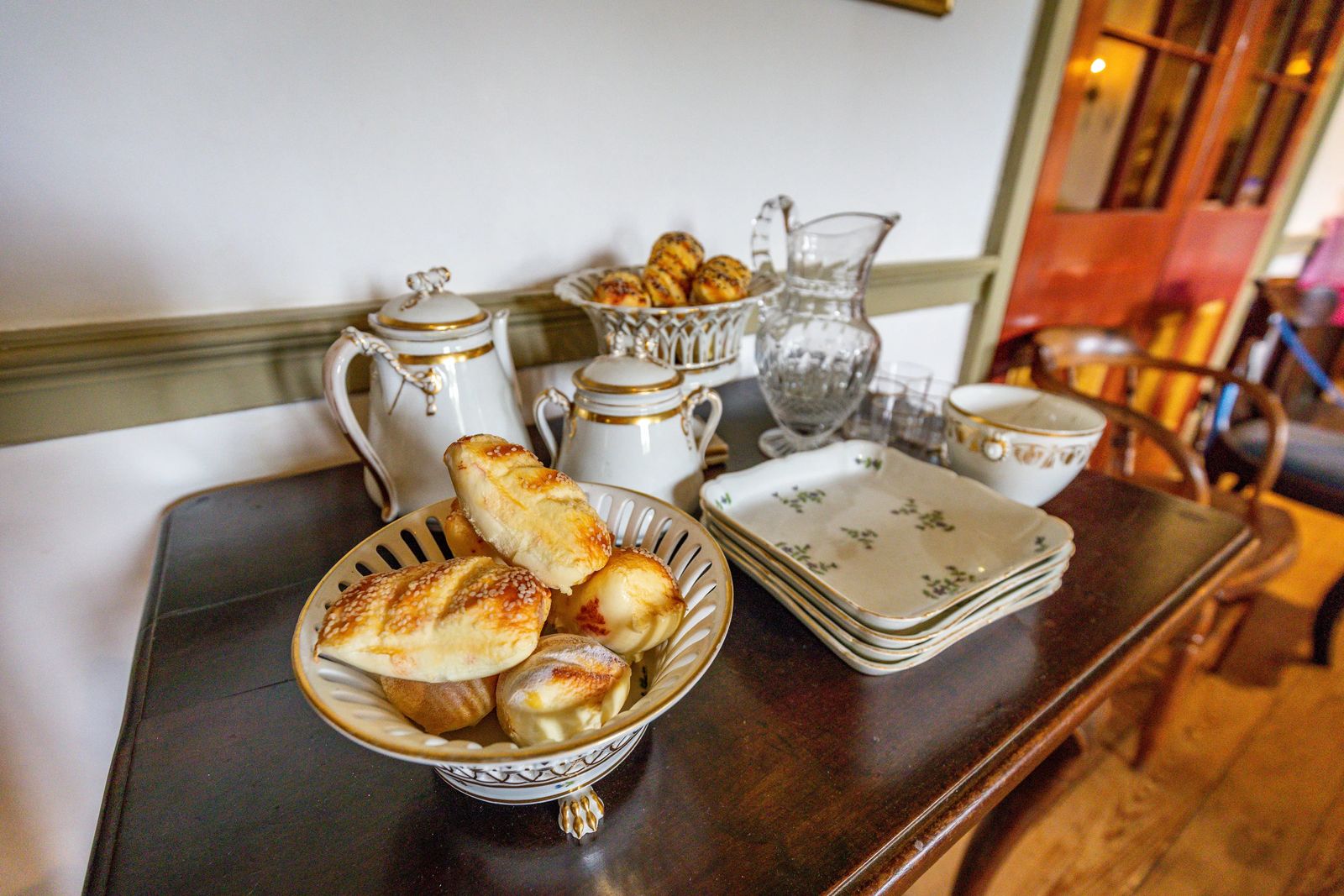
Br’er Rabbit is then taken again to the Lion King of the community and found guilty. The trickster rabbit then convinces them to throw him into the comfortable briar patch (just as in the American version) and takes off down the Mississippi with the King's daughter.
America is a collection of memories of different cultures from around the world, a melting pot of memories. However, I still think knowing where these stories come from and giving credit to the original storytellers is extremely important.

Black History at Laura Plantation
While much of this article has focused on what was happening to the family in the big house, the Laura Plantation gives an equally robust history of the slaves at Laura and surrounding area.
After finishing the guided tour in the big house, you are taken into the back gardens where the slave quarters and crops would have been. Your guides sit you down in a covered wagon area with visual guides mounted on the walls. On closer inspection you see that there are lists of slaves, their occupation and the cost of each slave during that time period listed.
My guide, Joseph Dunn, a historian and French speaking local, told us the truths of what the owners were like, and the not so glamorous stories of how slaves were treated at this plantation. From the teenage concubines of Louis, to Pa Phillips, to the mixed race babies that were obviously those of the masters of the plantation who were not considered family and some of which were sold to other plantations in the area to ‘save appearances’.

Joseph took us through a few restored slave cabins, and talked about how they survived, what a typical working day would be like. The diseases they were exposed to like Yellow Fever, Dysentery, Malaria and foot rot because of the moist conditions in the field.
He didn’t stop there though, he also told us what it was like to live on this plantation even after the Civil War had ended. Many of the slaves here spoke their native languages of Africa, and French. So when the war ended, many didn’t even know they were no longer slaves because they didn’t speak English. Many of the songs sung in the fields by the slaves on neighboring plantations were also in French and so it took many years for the news to be understood that they were now freed people of color.

Freed People of Color
Once they understood they were now considered free people of color, there was a resounding feeling of ‘now what?’. They spoke French, they were illiterate, and there were no jobs outside the ones they had known for years. The children of the slaves couldn’t go to school because the parents couldn’t afford it, having no ability to open a bank account…...so what did they do?
Some of the freed slaves joined the army for the war stipend, often coming home injured, deaf or with no teeth. Others continued to work on the plantations, with a ruse of ‘payment’ from the plantation that was often just an invoice of what they ‘owed’ for tools, food, rent, etc…..
In fact many continued to live at the Laura Plantation up until 1977 because they had nowhere else to go for several decades.

My Takeaway of the Laura Plantation Tour
Visiting the Laura Plantation was a PERFECT starting point to get an overview of the history of the area and unique perspective of French speaking local who knows the dual history of the effects of France culture, French history, Louisiana history, and the intricate details of what a Creole run plantation was like.
The balance of both the plantation owner history as well as the slave labor history of the plantation was well balanced, thoughtful and did not round out the edges of the history here to save face.
If you are wanting to educate yourself better on French history, black history, and cultural history in an accurate, entertaining and impactful way…..you cannot miss going to the Laura Plantation while in Louisiana.
Like it? Pin it! Sharing is Caring ;)
.jpg?fit=outside&w=1600)
.jpg?fit=outside&w=1600)
.jpg?fit=outside&w=1600)
.jpg?fit=outside&w=1600)
.jpg?fit=outside&w=1600)
.jpg?fit=outside&w=1600)
.jpg?fit=outside&w=1600)
.jpg?fit=outside&w=1600)
.jpg?fit=outside&w=1600)
.jpg?fit=outside&w=1600)
.jpg?fit=outside&w=1600)
Latest Articles On Culture Trekking


Welcome to Culture Trekking!
My name is Janiel, I specialize in solo female travel, cultural connections, sustainable adventures, food, and history to help make your travel experiences fun, meaningful, and delicious. My experience in travel and my personal story have allowed me to get published in Fodor's Travel, Atlas Obscura, Metro.co.uk, Trip Advisor, and multiple Podcast interviews. You can find me on pretty much every social media channel YouTube, Instagram, Twitter, Facebook, Pinterest, TikTok. To read more about me and my story click here. If you are a brand and would like to work with me, click here.













